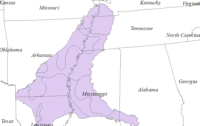The nation's high court opened its 2022 session on Oct. 3 with oral arguments in Sackett v. EPA, a major wetlands case taking yet another look at what the language of the federal Clean Water Act says about methods and tests used to determine when property owners need a federal permit to build on a site containing federally protected waters.
Although the question presented to the nation’s top court was narrow: whether the U.S. Appeals Court in San Francisco used the correct “test” to determine that portions of an Idaho property owned by Chantell and Michael Sackett constitute federally protected wetlands, the questions asked by justices suggest they may seek to make a broader ruling.
“This case is going to be important for wetlands throughout the country and we have to get it right,” said Associate Justice Brett Kavanaugh.
The court’s liberal wing—Justices Sonia Sotomayor, Elena Kagan and Ketanji Brown-Jackson, making her first appearance as a high court judge since being appointed last June—appeared to focus on Congress’ intent in enacting the clean water law. Speaking to the Sacketts' attorney, Damien Schiff, Jackson asked, “Why is it that your conception of this does not relate in any way to Congress’ primary objective as stated in the [Clean Water Act]?”
Conservative justices Samuel Alito, Clarence Thomas, and Neil Gorsuch spoke of challenges faced by the Sacketts and other landowners in the dearth of specific guidelines on how far a wetland must be from a navigable water before it is no longer deemed to be under federal protection. Gorsuch asked Brian Fletcher, the attorney representing the government, “How does any … reasonable person … within several hundred square miles in a watershed that drains into a body of water that is a ‘water of the United States,’ know whether their land is adjacent to” those waters?
The three remaining jurists—Chief Justice John Roberts, Kavanaugh and Amy Coney Barrett—seemed somewhere in the middle. Roberts asked attorney Schiff how to categorize streams that are present nine months of the year, and dry for three.
Kavanaugh noted that every administration since 1977 has used the term “adjacent wetland,” which falls under clean water law jurisdiction, to include wetlands separated by a dune or dam. “What significance should it have that every administration since [1977] … has included those wetlands as covered by this statute?”
Kagan and Sotomayor asked if there was some way to develop a new test that could be clearer. “A compromise,” or middle way, Kagan said.
Muddy Waters
The issue of how federal and state regulators define which bodies of water—including wetlands and transient or ephemeral streams—fall under Clean Water Act jurisdiction as “waters of the United States” has been the subject of numerous lawsuits and has been reviewed by the Supreme Court at least four times over the past two decades, including a prior case involving the Sacketts.
In its 2006 Rapanos 4-1-4 opinion, the high court created two different “tests” to determine what wetlands and other waters should require builders to obtain a federal permit. Former Justice Anthony Kennedy established the “significant nexus” test to include wetlands, ephemeral streams and headwaters that have a significant ecological impact on surface waters. Former Justice Antonin Scalia outlined a narrower definition that left out streams and other waters that were not permanent or continuously flowing.
The Obama administration developed the Clean Water Rule in 2015 that relied more on the Kennedy test than on Scalia's version. The Trump administration revoked and replaced that rule with one that is closer to the Scalia test. The Biden administration, which revoked the Trump rule, is working on a proposal that officials say will add more clarity for landowners, builders and environmental groups.
That proposed rule is currently under review by the Office of Management and Budget and set for release before Dec. 31.
Building groups such as the American Road and Transportation Builders and the National Association of Home Builders seek certainty, claiming that the current system can create unnecessary delay for construction projects. “Members' prior experiences with the agencies' application of the significant nexus test during jurisdictional determinations have proven to be a near limitless review process that, more likely than not, will result in the agencies finding federal jurisdiction,” said the homebuilders' group in a Sept. 23 blog.
Jon Mueller, vice president of litigation for the Chesapeake Bay Foundation, said in an interview he was struck by the idea that the court may try to develop a new “middle ground” test.
“After 10 years of applying one test with a bunch of new regulations and a new manual, state and federal agencies … have learned how to adapt” to the significant nexus model," he told ENR. "To start over again, we’ll just send all of those regulatory agencies and the regulated community back again to another round of litigation.”
Robert Percival, director of the University of Maryland’s environmental law program, said during an Environmental Law Institute webinar, “There’s some hope, given the possibility that Justices Kavanaugh, Barrett, and potentially, Chief Justice Roberts could join the three liberals in [an] opinion that doesn’t do a lot of damage to the Clean Water Act.”
'Right of Control' Theory Tackled
The court is also set to weigh in on a case in the current session through next June that could change the fortunes of a New York contractor convicted of bid-rigging.
Justices will hear arguments for and against the legal theory behind the 2018 federal conviction of Louis P. Ciminelli, the former CEO of a once high-profile Buffalo construction firm, and those of other upstate developers and officials, related to steered state contracts in what was deemed the "Buffalo Billions."
The court will weigh prosecutors' use of the "right-to-control" theory in the defendants' wire fraud indictments, under which they were found guilty of fraud for deliberately withholding important financial information from business customers, even without clear evidence that they benefited from doing so. Defendants, who could not disprove the theory to two federal courts, hope the high court will agree with their claims and reverse the convictions.
The Associated General Contractors also has weighed in on the case, with a brief in support of the defendants' argument against use of the right-to-control theory for federal criminal wire fraud prosecutions.
The approach "supports criminal prosecutions ... under factual scenarios where tangible economic harm or damage to property interests cannot be shown, much less proven beyond a reasonable doubt, as part of the underlying conduct constituting the scheme to defraud,” AGC said in its brief, adding that the theory allows the prosecution to prove harm without evidence of “actual, identifiable money or property loss” and only to prove that misrepresentations or omissions deprived the victim of the right to control its property interests.
While not defending actions of any of the parties, AGC said the right to control in this case involved the long-standing practice of discussions between industry firms and government contracting officials, and it risks criminalizing what the group terms an established non-criminal process that benefits, not harms, public authorities, industry and the taxpaying public.
The Supreme Court also must decide this term whether to take a case involving landowners along the route of the controversial Mountain Valley natural gas pipeline in Virginia and West Virginia who want justices to rule if their constitutional challenge of eminent domain powers delegated by the Federal Energy Regulatory Commission to the line's private developer to condemn land for the project was considered in lower court decisions.
Justices also could agree to consider whether to take up a long-running array of lawsuits between fossil fuel companies and multiple states and cities over whether the firms can be held liable for infrastructure damage caused by climate change.
The issue is whether the cases should be heard by federal or state courts, with industry arguing for the former jurisdiction. But the high court on Oct. 3 delayed its decision by asking the U.S. Solicitor General to provide an opinion.






Post a comment to this article
Report Abusive Comment